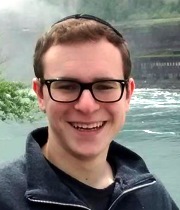Tackling the opioid crisis

With the Centers for Disease Control and Prevention reporting that every day more than 130 people in the United States die after overdosing on opioids (a class of drugs that includes heroin, synthetic opioids such as fentanyl, and prescription pain relievers such as oxycodone), representing a six-fold increase since 1999, it’s not hyperbole to characterize the situation as a crisis.
As in any crisis, an all-hands-on-deck approach is warranted, and in addition to front-line medical personnel, many computer scientists, engineers, and others are making meaningful contributions.
Graduate student Asher Varon

The year after earning an undergraduate degree in biophysics at Columbia University, Asher Varon participated in the Empire State Opioid Epidemic Innovation Challenge sponsored by the global Consortium for Affordable Medical Technologies. The device he created, a wearable “patch” that releases naloxone, a medication designed to rapidly reverse opioid overdose, garnered the grand prize of $10,000.
“Naloxone is typically administered in the form of a shot or a nasal spray,” Varon, who volunteered as an emergency medical technician in the Morningside Heights section of Manhattan while earning his bachelor’s degree, explained. “But that requires the intervention of a bystander or first responder. What if you’re totally alone when you overdose, and help does not arrive until it’s too late?” To solve that problem, QuikReversal, as he called the product, was designed to be worn consistently.
Now a master’s student in Tandon’s Department of Electrical and Computer Engineering, Varon is continuing to develop and refine his prototype. Last year QuikReversal garnered $25,000 as one of the winners of Stern’s $300K Entrepreneurs Challenge, in the Social Venture category, and it landed in second place at the regional level of the Global Student Entrepreneur Awards.
Tandon teaches the importance of finding practical technological solutions to pressing societal problems and the opioid crisis is undeniably pressing.” – Asher Varon
Alum Marisa Barbieri (’90)
When her mother became ill one year, Marisa Barbieri saw firsthand how convoluted healthcare billing could be. In response, in 1997 the IBM veteran struck out on her own to launch a startup, Competitive Solutions, focused on delivering healthcare solutions and services.
Later, after a family friend became addicted to opioids and overdosed, she wondered if she could use her software skills in some way to help battle that tremendous scourge. Collaborating with the New York National Guard; Catholic Charities of Orange, Sullivan and Ulster; and members of the Data Informed Opioid Collaborative (DIOC), a group comprised of community teams and government officials, she created the Hudson Valley Interlink Analytic System (HVIAS), a platform that allows hospital and law enforcement personnel to collect data and send real-time SMS messages as overdose cases appear in emergency rooms or local clinics.
Such information alerts first responders when a “cluster” of cases seems to be forming in a particular locale. This allows them to assemble needed kits of overdose-reversal medication and gives community outreach workers and peer counselors critical forewarning so that they can focus on the areas being hit the hardest.
Barbieri, who sits on the board of Tandon’s Polytechnic Alumni Association, made the platform available free of charge through her 1Life Project initiative, and while it was successfully deployed at hospitals throughout Upstate New York, she was not content to rest on her laurels. She has now rolled out PeerRX™, an app aimed at connecting opioid users to peer counselors and other resources.
While it has long been acknowledged by substance abuse and mental health professionals that peer support is invaluable — reducing re-hospitalization and relapse rates and decreasing emergency services usage and criminal justice involvement — connecting patients to support workers was a slow, hit-or-miss process.
Now, nurses or others using Barbieri’s new platform can simply type in data and request an appropriate, compatible peer from a participating agency — and get a response in under 10 minutes. The peer can then interact with the client throughout their recovery, providing emotional support, helping them navigate treatment options, and serving as advocates.
“Basically, we built Uber for health care,” Barbieri has explained. “I envision a day when all our hospitals and health centers implement PeerRX and our most vulnerable healthcare consumers can find hope and help as quickly as we can find a ride.”




